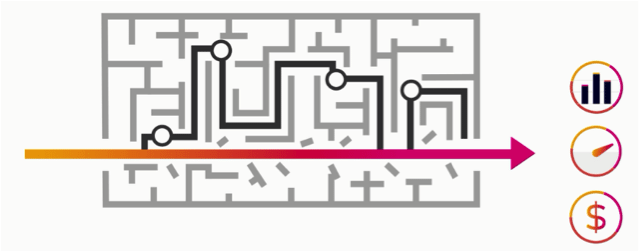As the endless thirst for data drives a continuous push for more network capacity, fiber remains the principle transmission technology underpinning all of our core, fixed line and mobile backhaul communications infrastructure. And yet, service providers still face numerous challenges when rolling out fiber infrastructure.

Fiber rollout programs often involve long running and complex processes that require end-to-end management across multiple systems, organizational groups and external partners. These systems and teams often work in separate islands or ‘silos’, with poor communication and little or no automation. Without centralized, common information easily accessible by everyone on the project, progress can be severely hampered, and operations cannot be scaled.
Planning and deploying fiber
A typical fiber rollout project operates on at least two levels. The first is the program and project management level, which includes demand planning, project prioritization, assignment, ongoing monitoring and management. The second level is detailed fiber project execution, which includes high-level fiber planning and cost optimization, fiber outside plant (FOP) detailed design and construction, fiber build, inventory system updating, and acceptance testing, followed by service launch. Advanced fiber rollout orchestration needs to encompass both levels.
Traditionally each of these stages would be planned and executed manually using a basic project management planning tool or spreadsheets. Thankfully, those days are over and the emphasis today has shifted to project orchestration and advanced planning tools.
Large-scale fiber rollout and upgrade programs are usually broken down into multiple, parallel projects within a main program flow. Hundreds of separate field engineering teams work on the projects and sub-projects, which may differ according to the network topology. For example, if we consider a fiber-to-the-home (FTTH) project, task flows for each type of project should be predefined for specific scenarios, such as workflows for single dwellings, multiple dwelling units (MDUs), backhaul and aggregation networks.
Successful project management of such highly complex, parallel projects involving hundreds or even thousands of personnel, and coordination of external contractors, requires automation and guided tasks in order to meet deadlines and cost targets.
Automation in turn necessitates the coordination and implementation of high-volume change management processes that leverage all key data sources including network inventories, asset management, activation systems, project teams and third parties.

Guided tasks necessitate the ability to create project plans automatically, directly from the project requirements, by using predefined process templates. As a result, during project execution, each user gains access to specific information that is tailored to his or her individual task. Users interact with the workflow system to complete their tasks and are then automatically guided to the next task. Various tasks may also be automated.
When in-flight changes are needed, it should be possible to dynamically apply process workarounds and plan updates with minimum disruption to the project. This is known as dynamic plan management.
Advanced orchestration offers a real solution for service providers faced with extensive fiber upgrade and rollout programs. By applying process automation to project planning and deployment, significant time and cost savings can be made and overall build quality improved. Service providers that have adopted end-to-end orchestration of network rollouts have seen cost savings of over 35% and project acceleration by over 40%.
To learn more about orchestrating and accelerating fiber rollout and upgrade visit: The race is on. Or contact us.

